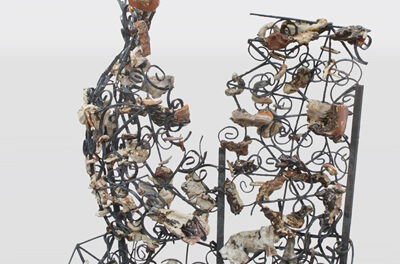The 20th season of Four Seasons Chamber Music started off with this program, first performed Thursday and Friday, September 26 and 27, at East Carolina University, then brought to Raleigh for Saturday’s performance at Hayes Barton United Methodist Church. It was the last of three performances of this program.
For two decades, Four Seasons, founded and led by Ara Gregorian, has brought consistently high-quality chamber music and musicians to both Greenville and the Triangle to enrich our cultural life.
The season runs through next May, with concerts both at ECU and in Raleigh. The Raleigh concerts are at Hayes Barton UMC, except for the final one on May 3, which is at Saint Mary’s School. The programming this season doesn’t include any music by living composers, although we can hope for such next year (the reviewer is one himself, at least for the moment).
About the musicians:
Four Seasons founder and artistic director Gregorian started his remarkable concert career with a Carnegie Hall debut in 1996 and joined ECU’s violin/viola faculty in 1998. He’s participated in chamber music festivals pretty much everywhere in the US and in many countries abroad. The string program at ECU has a strong reputation, and Gregorian has had a lot to do with that.
I first heard violinist Ida Kavafian in the ensemble Tashi, up in Rochester, playing the Quartet for the End of Time in 1974. She was already a star then and is still at the top of her game. It’s hard to find a more accomplished musician, as a member of the Chamber Music Society of Lincoln Center, experience as music director of Angel Fire and Bravo! Colorado, and so forth. This is her ninth appearance with Four Seasons.
Israeli cellist Zvi Plesser first played with Four Seasons in March 2001 during the first season; this is his 15th appearance. He has been a soloist with a long list of orchestras, and had an active concert career wherever classical music is appreciated.
Pianist Thomas Sauer first performed with Four Seasons in 2003, and this was his 20th appearance. He also has made music internationally, and has impressive recordings. He teaches at Vassar College and the Mannes College of Music.
The first work on the program was Piano Quartet No. 2 in G minor, Op. 45 (1887), by Gabriel Fauré. Owner of a prodigious mustache his whole life, he was one of the hirsute 19th century collection of masters giving us long-hair music. (He surpassed Greig; only Edward Elgar could compete with his soup strainer.) The second quartet is a bit less known and performed than the first; in terms of technical challenges, the string parts are straightforward, but the piano part certainly shows signs of having been written by a fine keyboard artist. While he said of virtuoso pianists “the greater they are, the worse they play me,” this piece is definitely a workout for anyone. Sauer did a remarkable job, keeping the balance with the three strings well in hand. Note that this ensemble is a one-off; this is the one program they have together. That means that they do not have the chance to develop the cohesion and coordination that becomes second-nature after much time as a group. At the same time, it does allow for a certain freshness. With artists of this lofty caliber, a pick-up band is hard to distinguish from a venerable institution, and I certainly couldn’t detect any lash in the gears.
This is not distinctly French music. Piano quartets at the time, along with much of chamber music, tended to be a central European, Germanic idea. Trying to place the geographical origin of this work, without any external hints, one would probably end up somewhere in Alsace-Lorraine. (One would be wrong, as his birthplace was down near the Spanish border – the attentive ear hears nothing Iberian in this piece.) The string textures tended to some Wagnerian turgid rumblings, and the melodic ideas are not easy to sort out or remember; there is more of an emphasis on general feelings and impressions (not to say Impressionistic by any means!). The slow movement, while celebrated by some, struck me as a bit of a snooze, although it was well-performed. The composition comes about two-thirds of the way through Fauré’s career, but there isn’t a huge difference in style from young to old.
After a brief intermission, we had the second of the two works; Piano Quartet No. 1 in G minor, Op. 25 (1861), by the 28-year-old Johannes Brahms. Nary a whisker of any type then, but plenty of long hair to fit the stereotype. Listeners may be familiar with Arnold Schoenberg’s 1937 orchestration, subsequently danced by George Balanchine and Co. While there is a certain risk in programming all music set (ostensibly) in the same key, without the constraints placed by, say, banjos, the music in both works is sufficiently sophisticated to obviate any monotony.
This music is very well-known, and I won’t get into details beyond the clear expertise brought to the performance by musicians who obviously had been to this rodeo before. I’ve heard this performed in years past from time to time, but this was something very special. The fast second movement is marked “con sordino” (with mutes); back in the day we used to call that “with sardines.” Kavafian’s mute is decorated with ruby spangles. I suppose that even if they were real rubies, the violin would cost more than the mute. In this movement, one gets the interesting effect of muted strings playing as loud as they can under the circumstances. The final movement, quite the faux-Gypsy romp, has the reputation of being one the most difficult, technically, of any of Brahms’ chamber music. It was a rousing and enthusiastic ending, well received by the audience and certainly by this reviewer.












